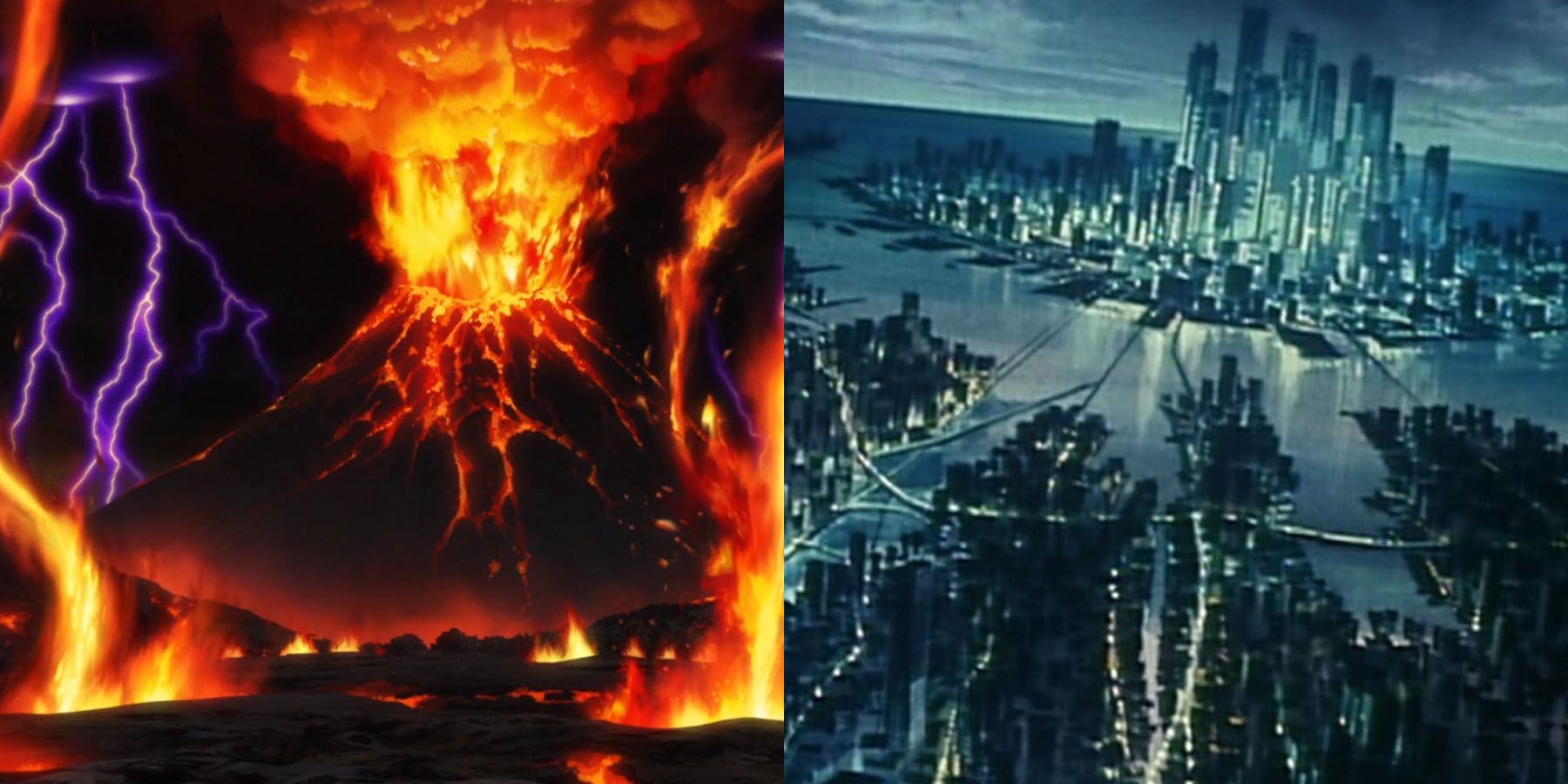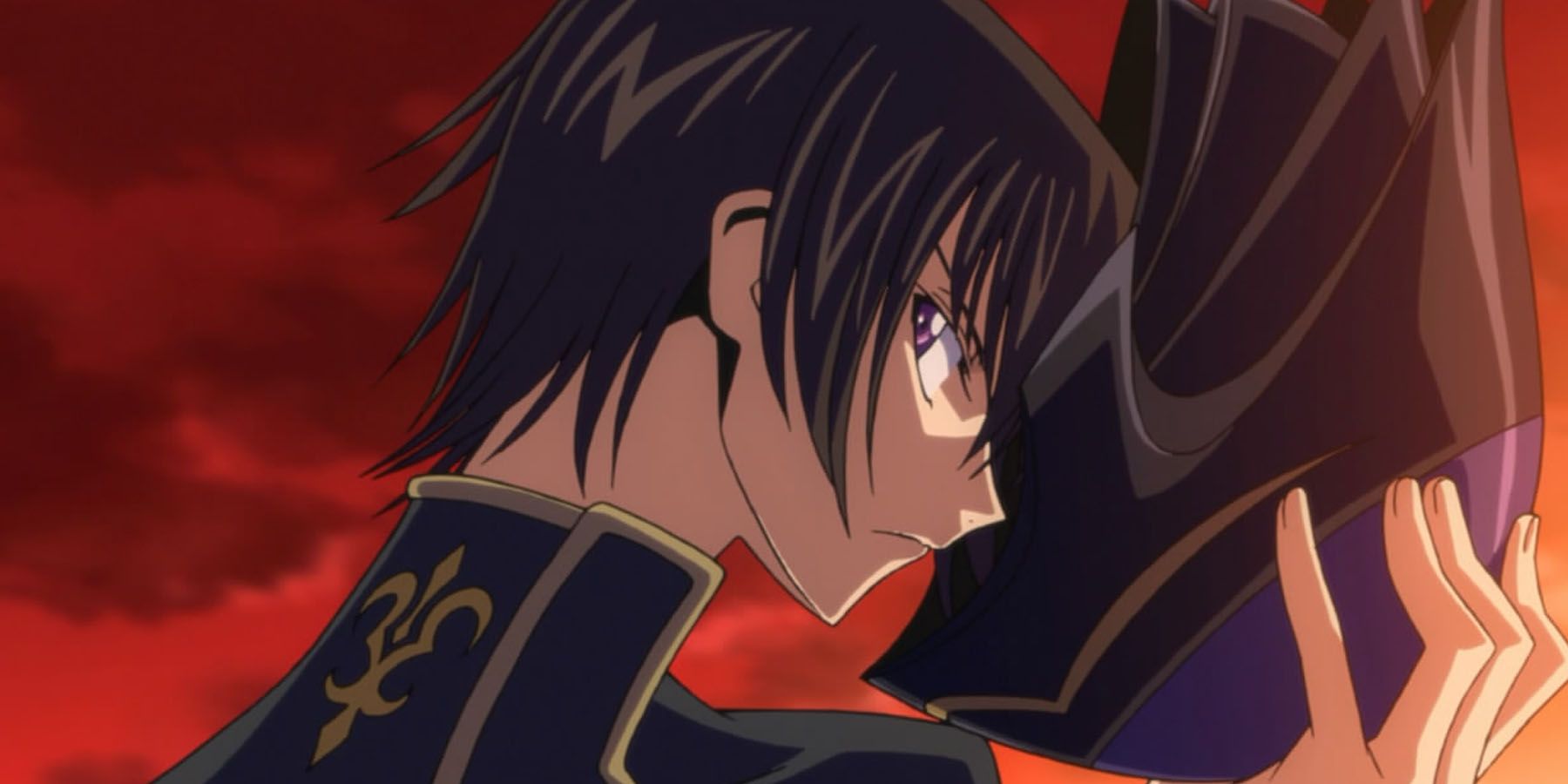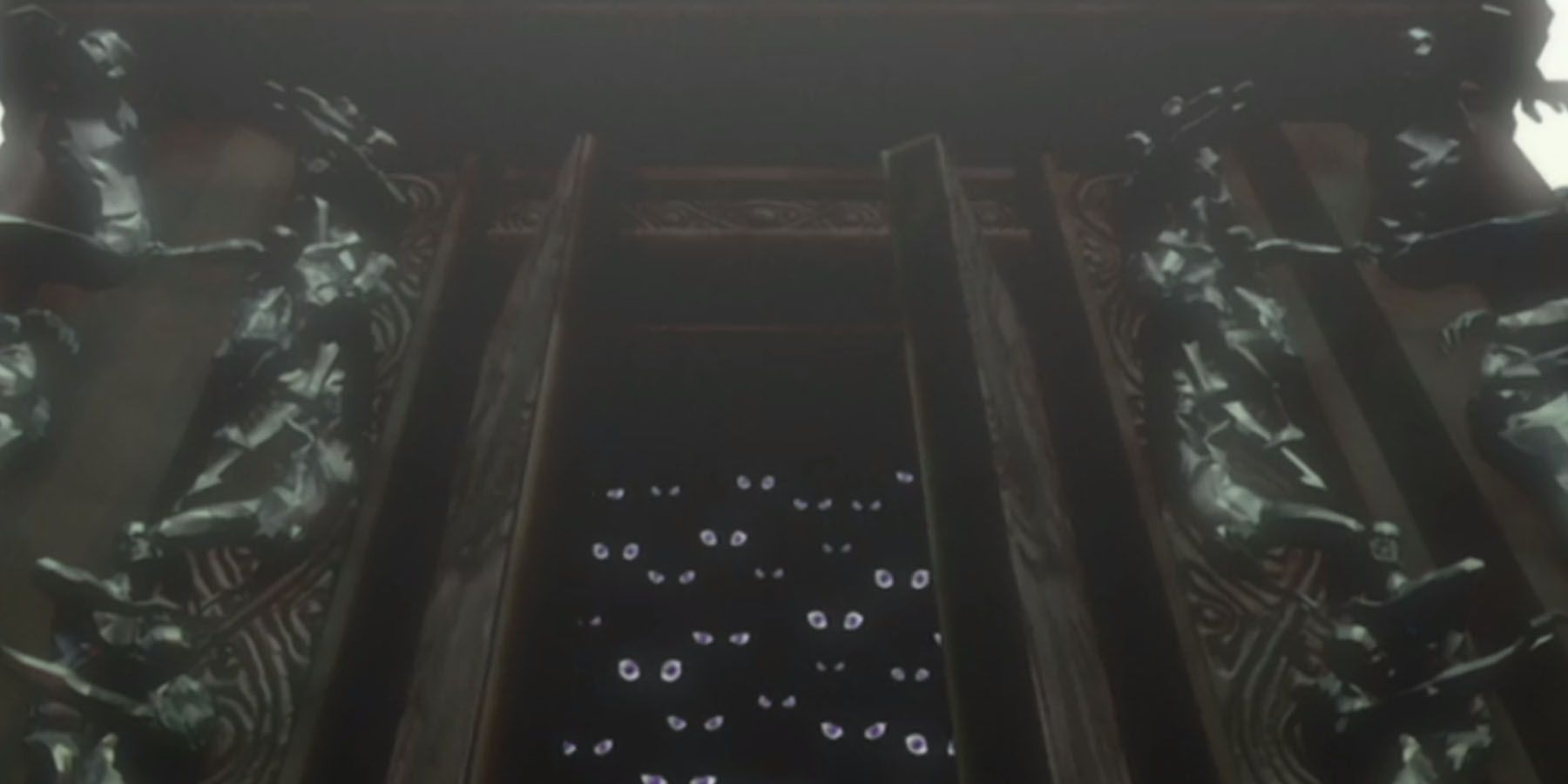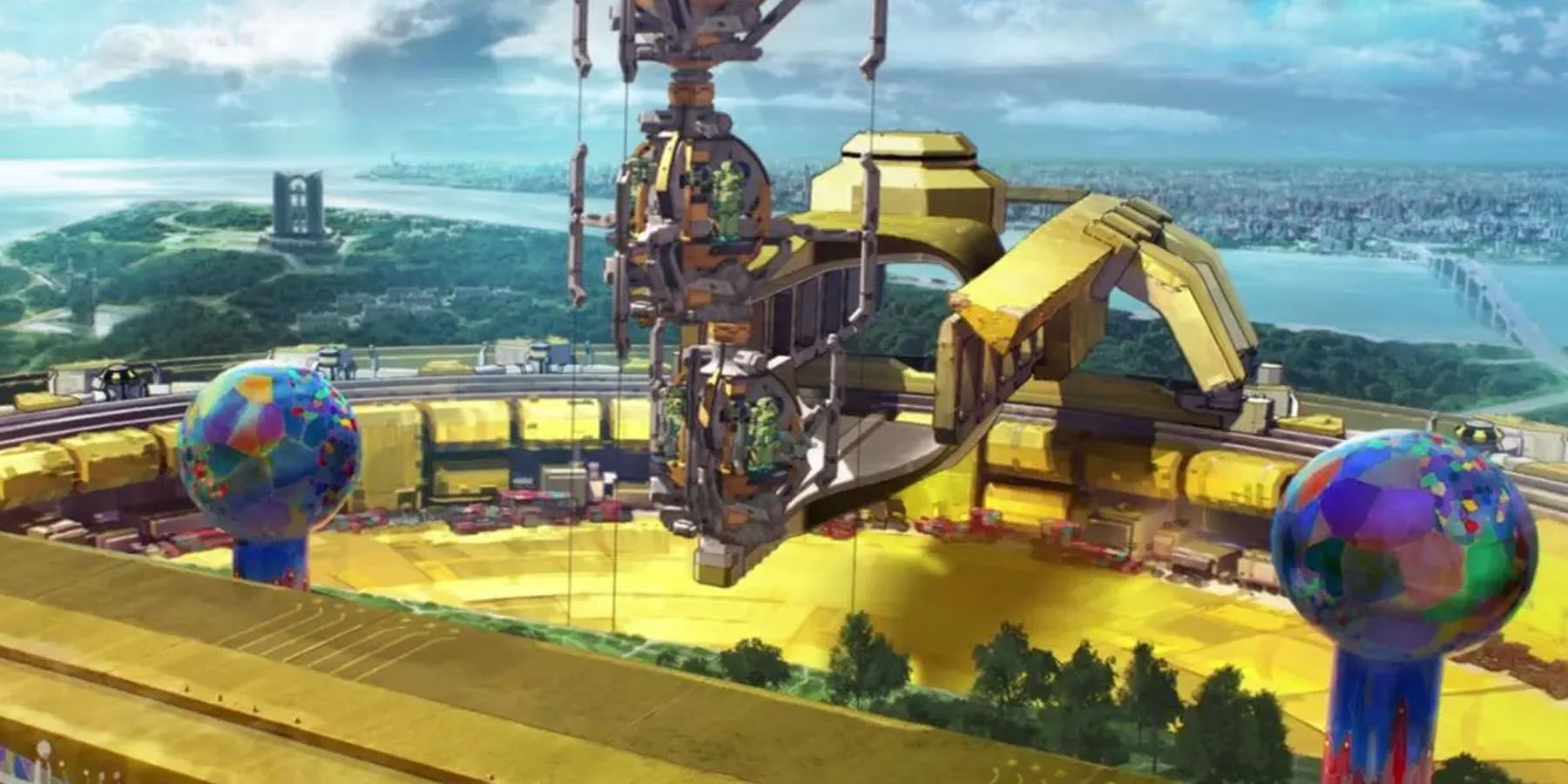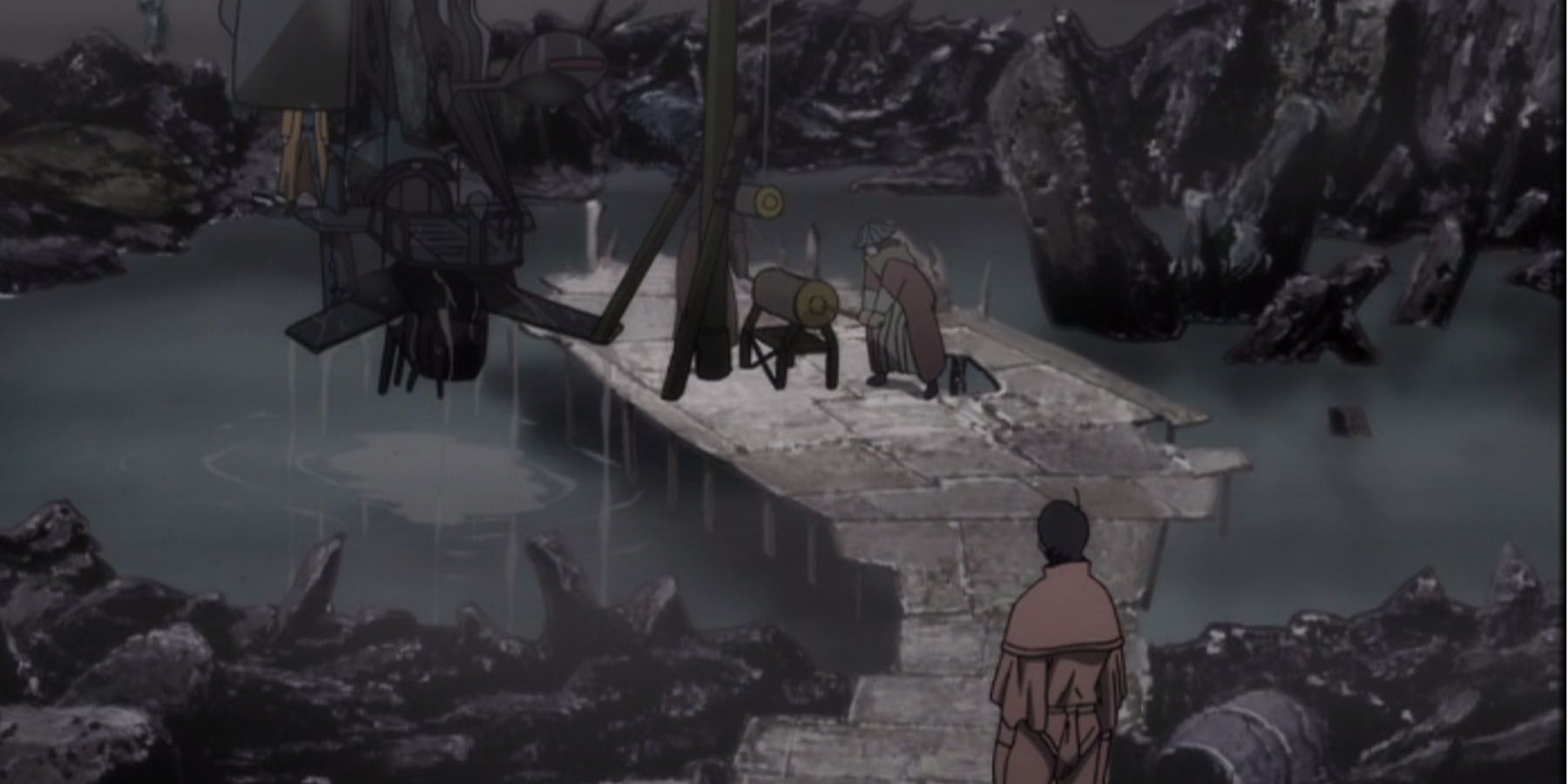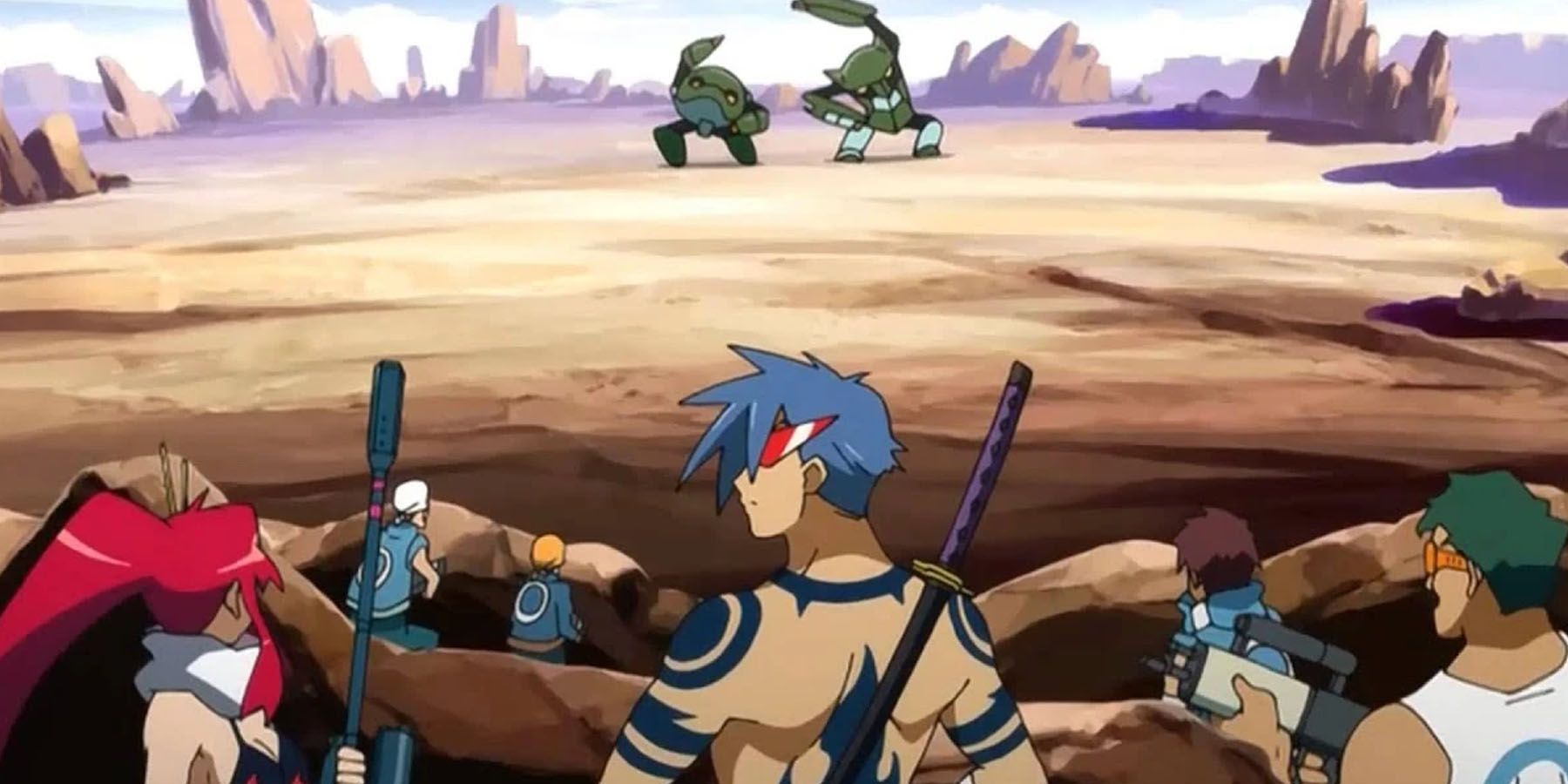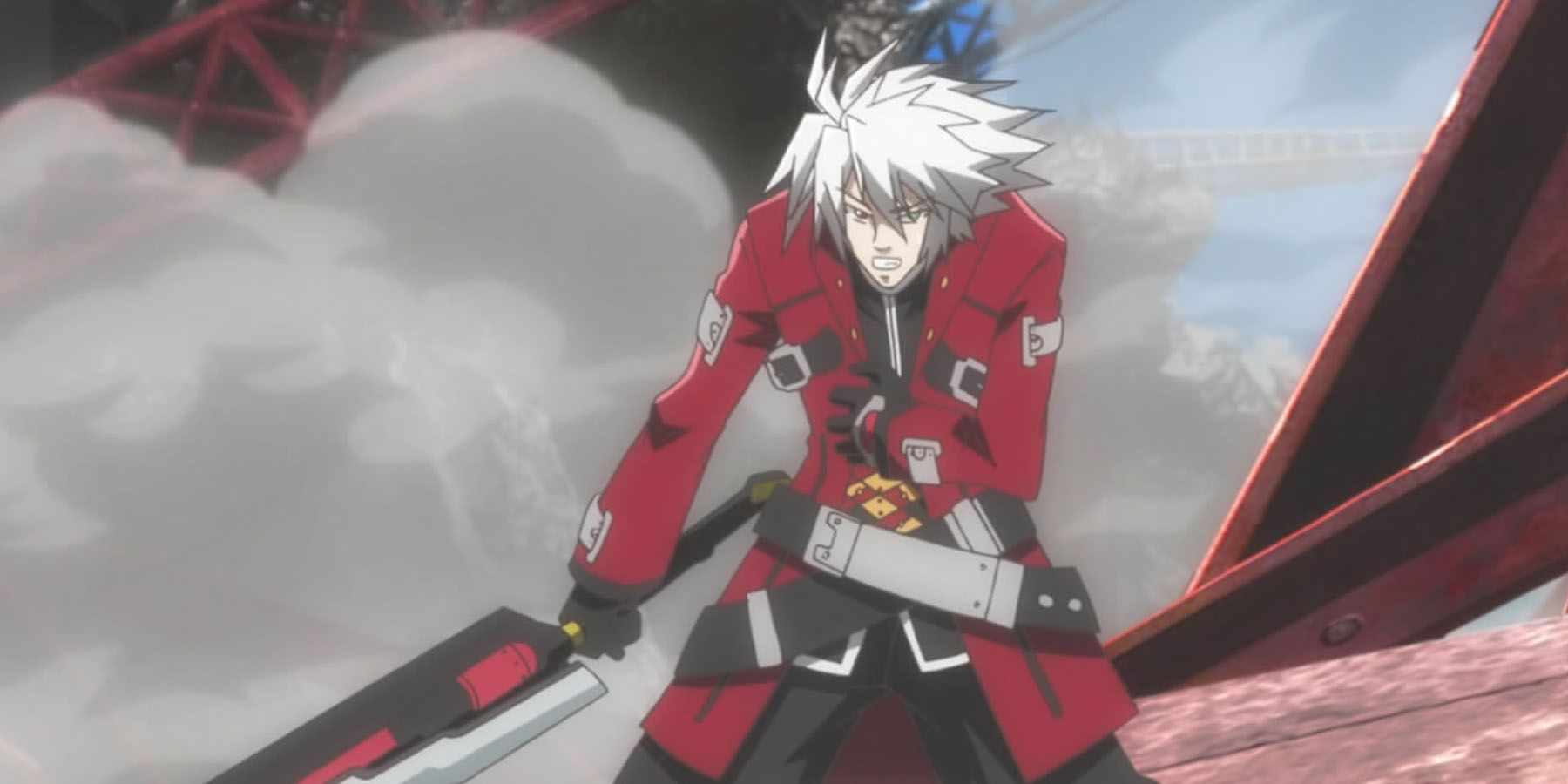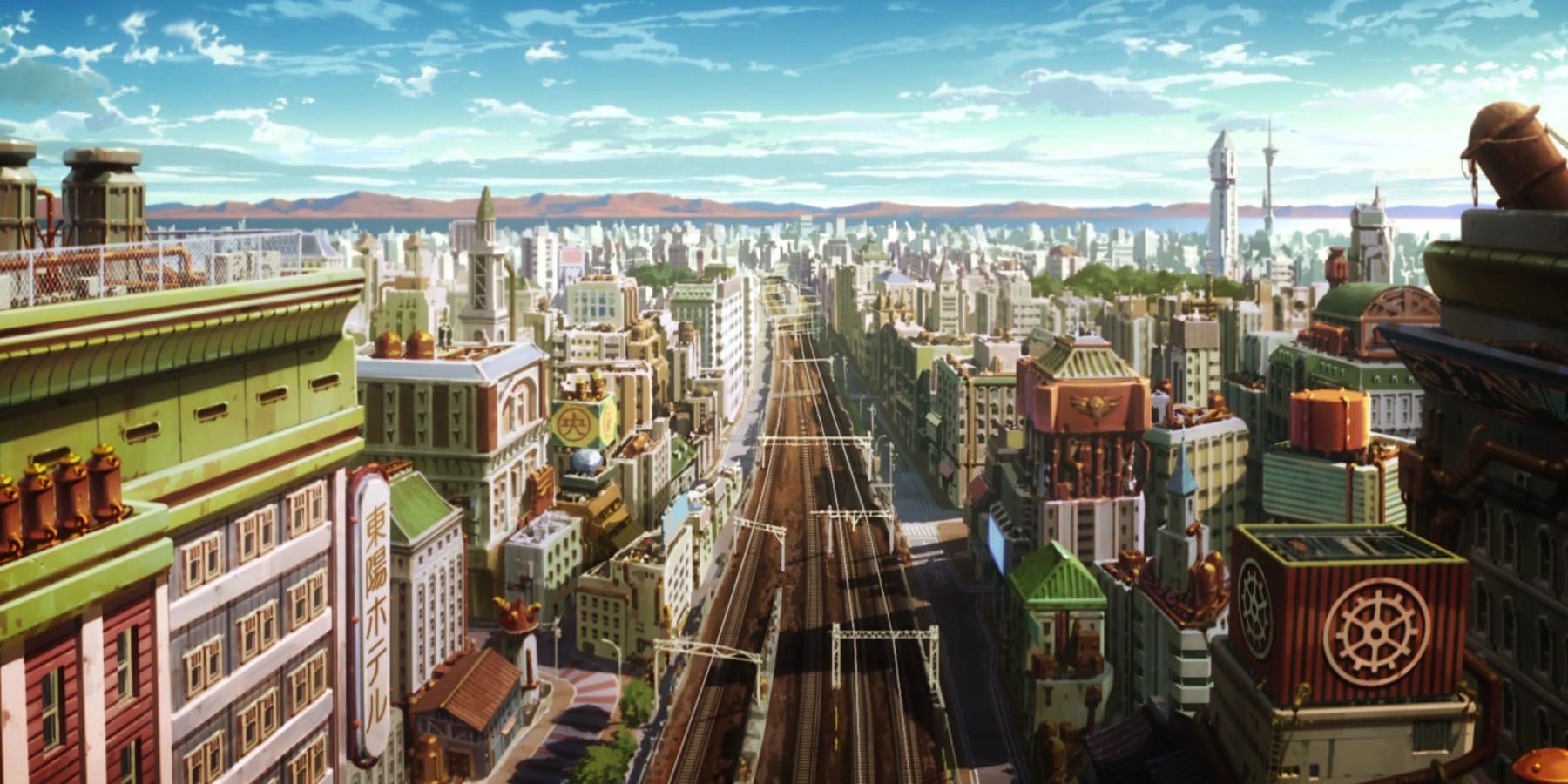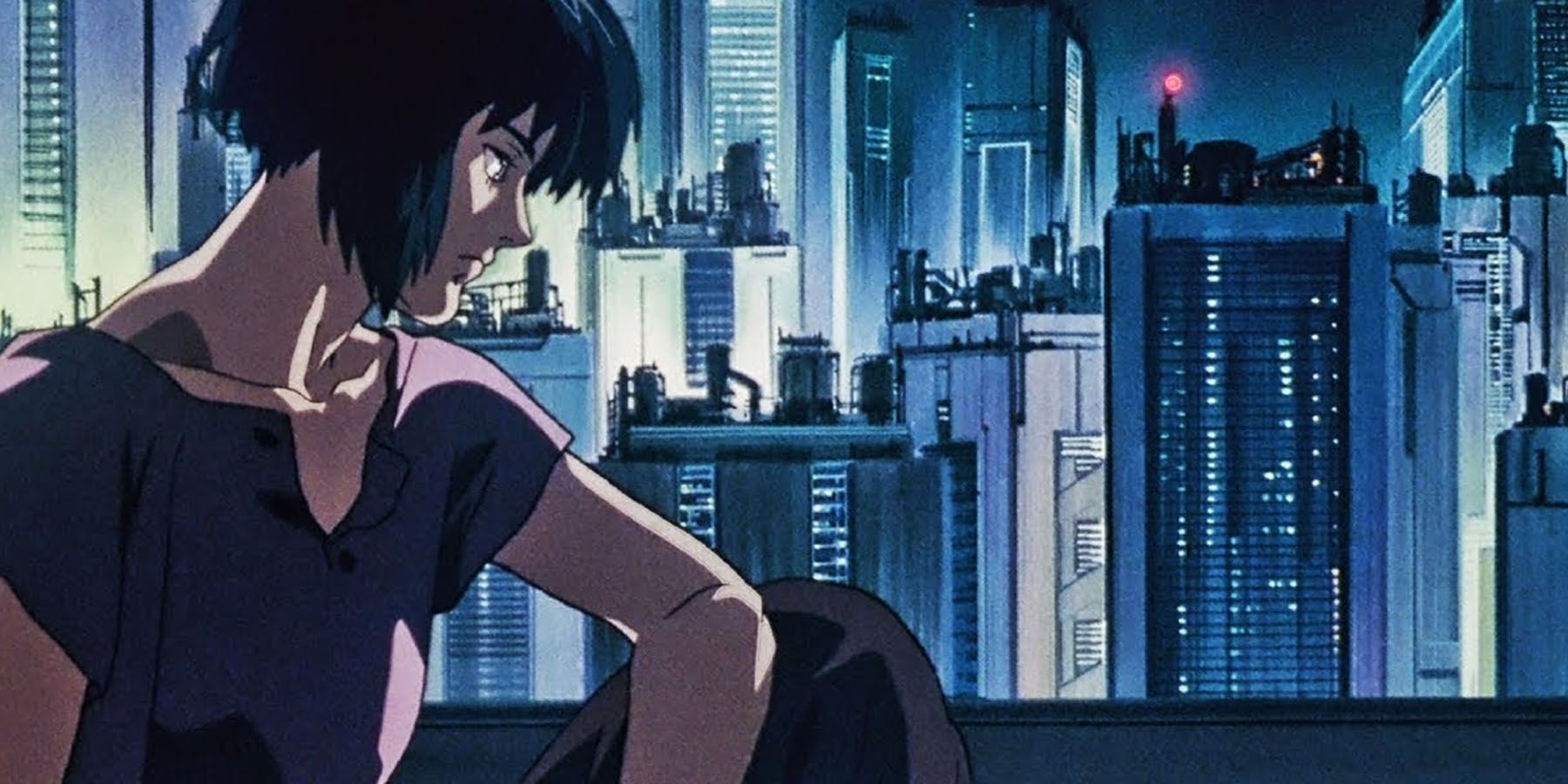It’s not uncommon for anime to have some of the craziest stories across various genres, but most popular anime often take place in versions of Japan or the real world slightly altered by some events. These may come in the form of mysterious occurrences that not everyone is aware of, or romance and slice-of-life anime that occur in exactly the same version of the world. However, some anime set the bar high enough that their stories aren’t just engrossing for their narrative, but also for their take on the setting.
In fact, some anime put so much attention to storytelling that their stories are set in rather interesting versions of Earth. These include worlds with timeline divergences that lead to one nation’s supremacy, to anime where the “real world” is simply an alternate dimension.
8 Code Geass (2006)
When exiled prince Lelouch vi Britannia receives the Geass, he was bestowed with the Power of Absolute Obedience. With this new hypnotic power, Lelouch creates the masked alter-ego Zero, establishes the Order of the Black Knights, and starts a rebellion against the world-spanning Holy Britannian Empire. While the Code Geass anime emphasizes hardcore anime action and Lelouch’s tactical chess games in open warfare, a lot of what gave Code Geass a solid narrative has to do with its world that has a striking resemblance to modern Earth.
However, instead of Code Geass being a typical alternate history, the supplementary media takes this a step further by providing a more in-depth history. In Code Geass, its ATB (Ascension Throne Britannia) calendar has begun when Celtic king Alwin I managed to repel Roman forces and protect united British tribes. Come centuries later, the development and acquisition of the powerful Sakuradite transformed the Holy Britannian Empire into the world’s largest superpower, threatened only by the Chinese Federation and the United Republic of Europia. Fans of Code Geass who want to explore its world outside of Lelouch’s conquest may find supplementary material like Akito the Exiled quite an eye-opener to the depth of its world.
7 Fullmetal Alchemist (2003)
While it’s Fullmetal Alchemist: Brotherhood that served as the faithful adaptation of the Fullmetal Alchemist story, it’s the 2003 version of Fullmetal Alchemist that really explored the boundaries of storytelling with the IP. Although the anime tried to follow the existing plot back then as much as possible, it did take some liberties with some twists and turns - particularly during the parts when protagonists Edward and Alphonse Elric were able to access The Gate. In FMA lore, The Gate or The Gate of Truth is only known as God’s domain and is the main source of alchemical abilities. Brotherhood showed that entering The Gate gives users incredible knowledge for an ironic yet harsh price.
However, in the 2003 anime, it’s revealed that beyond The Gate is “The Other Side,” which is literally a counterpart of the real world. This means that the region of Amestris in FMA isn’t an alternate history, but an alternate world entirely. Moreover, it’s explained that everyone in the real world has a dimensional counterpart to Amestris who may be able to use alchemy. Whereas the Ishvalan Civil War rages on in Amestris, its equivalent in the Other Side would be World War 2. Compared to other anime with wild alternate versions of Earth, 2003 FMA’s rather “normal” alternate world concept remains a shocker, especially when a “real world” is operating within the same universe, and their world didn’t replace Earth entirely.
6 Gundam: Reconquista In G (2014)
It’s not uncommon for any anime in the Gundam series to take place in its own alternate timeline, and Gundam: Reconquista in G takes place in its own self-contained universe. Called the Regild Century, this was apparently an alternate take on the Gundam series’ iconic Universal Century timeline, which in this anime ended in a global conflict that led to starvation and the destruction of space colonies. Remnants of humanity now resided in the Amazon and, through the Capital Tower orbital elevator, managed to get supplies from a distant colony.
Due to the need to keep the Capital Tower elevator safe, people in the Capital Tower nation had been practically forbidden to go near it. Such was their dependence on the elevator that they developed a religion surrounding it called SU-Cordism. Not only that, the entire Recognquista in G series explores the life of Bellri Zenam and his adventures in the Capital Guard while protecting the said space elevator. Compared to other Gundam series where the horrors of war are a constant message, Reconquista in G explores a world struggling to survive just after it, and having to resort to worshipping a life-giving elevator to preserve humanity’s unity is quite a unique approach to the subject.
5 Ergo Proxy (2006)
When one thinks of cyberpunk, one would think of vast metropolises where floating cars are just as abundant as cybernetic implants - and while this image of Cyberpunk 2077 is reasonably cyberpunk, another take on the subject would be Ergo Proxy. In this 2006 series, Ergo Proxy shows the story of Inspector Re-L Mayer as she investigates a series of murders apparently linked to a virus giving AutoReiv androids self-awareness. This threatens to break a lasting peace between AutoReivs and their human creators, especially during the discovery of humanoids called “Proxies” that unravel a government conspiracy.
What’s perhaps interesting in Ergo Proxy’s version of cyberpunk is its post-apocalyptic premise. In the anime, an ecological disaster that happened thousands of years ago transformed Earth into an inhospitable planet, forcing everyone to reside in city-wide “domes” where AutoReivs became assistants to mankind. Seeing advanced technology blend within humanity’s fight for sheer survival is quite a potentially accurate yet incredibly harrowing view of the future.
4 Gurren Lagann (2007)
Despite the crazy mecha action emphasized in Gurren Lagann, the wild adventures of Simon and Team Gurren aren’t just to facilitate over-the-top action sequences. In fact, its backdrop of a desolate and conquered Earth is worthy of dissection (no pun intended). The story of Gurren Lagann takes place on an Earth conquered by the Spiral King, Lordgenome. In order to force subservience, his forces ensured mankind’s remnants only lived in subterranean villages, where diggers like protagonist Simon are tasked to further expand their territories underground.
Throughout the anime, Team Gurren not only gets to slowly pose as a credible threat against Lordgenome but also expand on how life on Earth affected the greater cosmos. It’s eventually revealed that humanity progressed greatly through advanced technology and the mythical Spiral Power, a supernatural cosmic force. However, Team Gurren’s exploration would also reveal a conspiracy that would explain Lordgenome’s insistence on subduing mankind, putting Earth as the middle ground of a universal-level conflict.
3 BlazBlue: Alter Memory (2013)
Although primarily a video game franchise, fans of fighting games from Arc System Works may be delighted to learn that BlazBlue: Alter Memory is a decent retelling of the first two (2) titles of the BlazBlue franchise, namely Calamity Trigger and Continuum Shift. The story begins near the end of AD 2199, when vigilantes have begun flocking to the 13th Hierarchical City of Kagutsuchi after sightings of the SS-class rebel Ragna the Bloodedge, rumored to have the highest bounty in human history. While the world of BlazBlue itself is set largely in a post-apocalyptic landscape that combines elements of sci-fi, fantasy, and the Wild West, its rather weird take on aesthetics stems from a rather complex backstory.
Back in 2100 to 2110, the appearance of an entity known only as the Black Beast sparked the Great Dark War that almost annihilated human civilization. While the Six Heroes managed to defeat the Beast, they also helped humanity form the Magic Formulas that united science with sorcery. This resulted in a society that uses mass-produced magic through grimoires, which unfortunately created a socioeconomic divide. Much worse is the Ikaruga Civil War that ended in the destruction of the dissident Ikaruga Federation that simply wanted equality among humans who can use the Magic Formulas. This war resulted in stricter measures in using grimoires in everyday life, resulting in the present riskier and wilder BlazBlue world.
2 Fire Force (2019)
When the Great Cataclysm almost ravaged the world in flames, some of mankind’s only survivors managed to take refuge in what was left of the Holy Sol Empire. In the present day, the Empire established the Fire Force brigade to combat increasing occurrences of spontaneous human combustions that leave monstrous Infernals in their wake, with protagonist Shinra Kusakabe joining other pyrokinetics in the organization to protect what’s left of humanity.
Outside the fact that Fire Force was stated as a prequel to the Soul Eater series, the premise of the anime itself works as an interesting-enough standalone universe. Prior to being called the Holy Sol Empire, the setting of Fire Force was known as the Tokyo Empire, one of the last bastions of humanity made stable by Haijima Industries’ perpetual thermal plant Amaterasu, and the Holy Sol Temple established by Tokyo Emperor Raffles I. Despite the rather simple premise, the post-apocalyptic premise of Fire Force is rather unique in its fire-centric theme.
1 Ghost In The Shell (1995)
Anyone who hears the term “cyberpunk anime” would almost immediately remember Ghost in the Shell, primarily for its creative take on visuals and a rather grounded approach to both its sci-fi concepts and the multi-faceted look in a post-cyberpunk Japan. Designed more as a police procedural than an anime with a deep narrative, Ghost in the Shell shows the adventures of cyborg Major Matoko Kusanagi and Public Security Section 9 as they deal with various cybercrimes: be it involving political scandals, sketchy companies, and elusive cybercriminals that take advantage of the blurring lines between naturalism and transhumanism.
What’s perhaps interesting about the world of Ghost in the Shell is how it lets its stories elaborate the world for viewers and not the other way around. As a cyborg, Major is always confronted with conflicts of remaining “human” in a fully-artificial body. Outside this internal conflict is having to deal with a society where a lot of humans have cyberbrains that improve their brain functions, ghost-diving to experience cyberspace in a physical sense, and even having to deal with sci-fi killers with a knack for philosophy.

